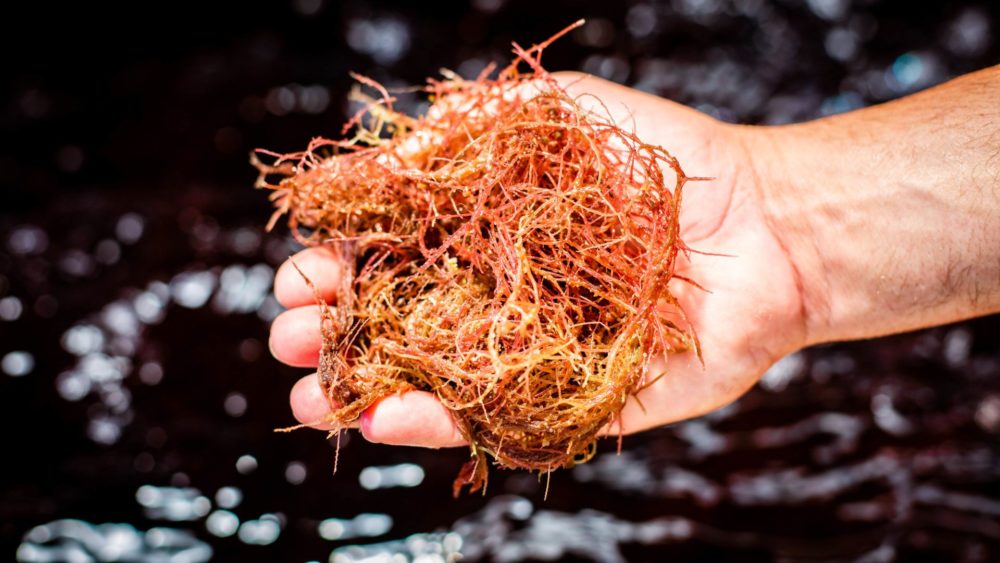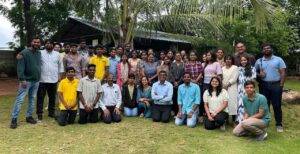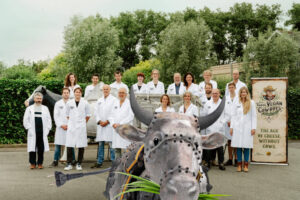Feeding cattle whole Asparagopsis seaweed rather than isolated bromoform—its core bioactive component—is significantly more effective for livestock methane reduction, according to a new study.
The peer-reviewed in vitro study, published in Animal Feed Science and Technology, was funded by Asparagopsis grower CH4 Global* [disclosure: AgFunderNews’ parent company AgFunder is an investor] and compared the potential of whole Asparagopsis armata seaweed vs pure bromoform on methane reduction in rumen fluid from Holstein cows.
It found that the whole seaweed slashed methane emissions by 95.6% when included at 0.5% of the diet vs a 59.6% reduction from an equivalent dose of bromoform alone.

Why it matters
While some companies are extracting bromoform from seaweed or producing it via chemical synthesis or microbial fermentation, this is less effective than using whole Asparagopsis armata seaweed, which contains other components that appear to contribute to its methane-busting potential, claim the authors.
“The Asparagopsis armata biomass was effective in decreasing CH4 [methane] yield at supplementing levels of 0.25 and 0.50 % by 62.5% and 95.6% respectively, while the bromoform levels added to the basal diet (0.0036 and 0.0073 mg), which correspond to the bromoform content in 0.25 and 0.50% biomass respectively, led to a reduction of CH4 yield by 23.0 and 59.6% respectively.
“We have shown for the first time that the efficacy of Asparagopsis armata is much greater than that of bromoform alone, supporting the notion that bioactive compounds in the biomass other than bromoform are responsible for about 40% of the reduction of CH4 emissions in our study.”
They added: “For bromoform to have the same reduction potential as 0.50% Asparagopsis armata biomass as a feed additive, the dosage needs to be increased. However, this raises concerns about the hazards of bromoform for the health of animals and humans.”
By contrast, they claim, “Natural products or whole biomass are more likely to receive customers’ acceptance than synthetic inhibitors… At or near the minimum effective inclusion levels of Asparagopsis biomass, there are no detectable levels of bromoform in animal products, ensuring animal health and product quality.”
Livestock methane reduction strategies
While whole seaweed may be more effective than bromoform alone for reducing enteric methane, growing it at scale is not for the faint-hearted, say startups in the livestock methane reduction arena, who are exploring everything from vaccines and breeding animals that produce less methane to editing the genes of the microbes in the rumen.
Number8 Bio, a Sydney-based startup that had originally focused on producing bromoform via microbial fermentation, for example, is now convinced that the most viable route to cost-effective production of feed supplements to reduce methane emissions from burping cows remains synthetic chemistry, not biomanufacturing or large-scale seaweed cultivation.
“The thing that will be most successful in this market has to be very low cost and very high efficacy,” says cofounder Dr. Tom Williams. “And right now I don’t see how that can be achieved with anything that’s not a synthetic chemical.”
Dr. Colin South, CEO at Massachusetts-based ArkeaBio, meanwhile, reckons that “a vaccine has rightly been called the holy grail in methane mitigation, because if you can execute properly, it will be the lowest cost and the easiest to scale quickly. We’re talking about milligram quantities [per dose], there is already animal vaccine manufacturing capacity out there and distribution channels already exist to essentially all of the world’s 1.2 billion or 1.5 billion cattle.”
In contrast, he claims, scaling up the production of millions of tons of seaweed is a vast technical and logistical undertaking that will take years. “When you just think about the logistics of what we’re doing to get to 1.5 billion animals, or 1.2 billion animals, the amount of antigen we need would all fit in a single 20-foot container. Whereas, if you’re doing it with seaweed, you have to establish an entire supply chain, growing, manufacturing and distributing 5-10 million tons of seaweed worldwide, and getting it in the hands of farmers who need to feed it to animals on a daily basis. It’s a completely different logistical challenge.”
However, Dr. Steve Meller, CEO at CH4 Global, said the results of the study validated his firm’s approach: “The results of this study have important implications as CH4 Global continues scaling Methane Tamer [the startup’s a line of animal feed supplement formulations based on whole Asparagopsis armata] for our commercial partners.
“Not only do they validate the performance advantage of whole natural Asparagopsis over synthetic compounds, but they also underscore the cost-effectiveness of our solution. Using whole Asparagopsis allows us to achieve superior methane reduction with a lower dose, making Methane Tamer an economically viable option for farmers.”
*According to the authors, CH4 Global was not involved in the study design, collection, analysis, interpretation of data, the writing of the study or the decision to submit it for publication.
Further reading:
ArkeaBio: Vaccination is ‘the lowest cost and easiest to scale’ livestock methane reduction solution




